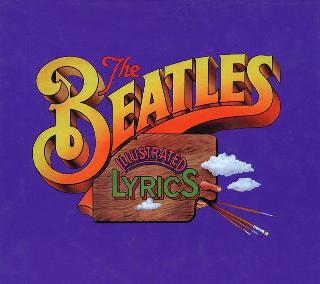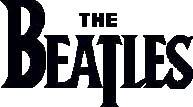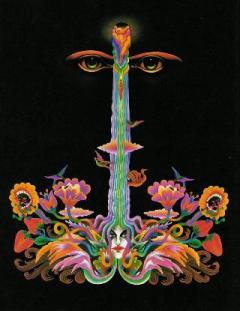Index
Home
Vorige
Thank You Girl
Composer(s) : Lennon and McCartney
Year : 1964
Chords/Tabs: Thank You Girl
Notes on "Thank You Girl" (TYG)
"Thank You Girl" is yet another deceptively simple song of the early
period, a "quick one" no less, which reveals a variety of surprising
twists applied to the old formulas. Beyond the formal and harmonic
sorts of details we usually explore, the arrangement here is also something
to be savored; in particular, I trust our peek at the vocal parts will,
alone, be worth the price of admission.
This song, by the way, is often mentioned as an object lesson of just how
far Captiol was capable of going in the butchery of the Beatles' music.
Indeed, if you slap on a vinyl copy of the "Second Album" you'll hear
a mix of this song which features kitschy harmonica overdubs, and a sort
of heavy reverb which, beyond mere "air", makes the whole production
sound like a Phil Spector wall of sound. In contrast, the so-called
official version on Parlophone sounds more like chamber music and is
to be strongly recommended to those not familiar with it; almost hard
to believe it's the same take which underlies the Capitol version.
The Form
At first blush, it appears like we're dealing with one of the very
standard forms: two verses, a bridge, and a final verse, the whole
thing enclosed by both intro and full-ending outro. But note the
following intruiging peculiarities:
- The intro is repeated before the final verse.
- The four-bar phrase "And all I've got to etc." is repeated throughout
the song as a refrain; it follows the bridge as well as each verse.
- The outro is a neatly crafted extension of material from the intro,
and features that three-time repetition of the same phrase which is
so much a trademark of the Beatles.
The complete formal outline therefore looks something like this:
Intro - Verse/Refrain - Verse/Refrain - Bridge/Refrain - Intro -
Verse/Refrain - Outro
The Harmony
There is a lot of mileage gotten here out of only three chords. The song
is in D major, and more than 90% of the music is built on the I-IV-V chords
of D, G, and A.
Only two other chords are used, and these make their first and only appearance
in the bridge; i.e., the vi and ii chords of b and e.
A Run Through
Intro
The intro is only four measures long but is quite rich in detail, and
schematically looks like this:
|Harmonica -------- |Voices ------------ |Verse
chords: |A |G |A |G |D
D: V IV V IV I
First off, there's a slight ambiguity as to what key we're in at the outset.
By the time you reach measure 5, the music finally lets you know that "this is
'D.'" but until then, there is the suspenseful possibility that we just might
be in the key of A, and that the opening chords are I and flat VII. To
put all this another way, this phrase has a "convergent" shape, moving
homewards having started in the outfield.
Turning to the arrangement, we find that by the time the verse begins,
there have already been three changes of texture in very short order.
The first two measures feature harmonica plus heavy tom-tom drumming which
stresses every beat in the measure. The next two measures introduce
John and Paul's voices in Everly Brothers' style parallel thirds while the
drumming shifts over to the lighter snare and cymbals-tapping work which
is used throughout most of the rest of the song. Thirdly, the start
of the verse provides contrast with the entire intro in that the chords of
the verse are presented in an unembellished oom-pah style, whereas the chords
in the intro are all embellished by neighboring tones on the offbeats
like so:
F#-F- F#-F-| E-E- E-E-
E-E- E-E- |D-D- D-D-
C# C# |B
A A |G
Two other details:
- the successive harmonica and vocals parts in this intro fit together
into a single descending scale of E-D-C#-B-A.
- there is a vivid kiss-like sensation embedded in the introductory vocal
parts; not how the simple phonemes "oh-mmm-you" are elided to sensual effect;
try it yourself and see what it does to your lips.
Verse - "You've been good to me .../I could tell the world ..."
The verse is eight measures long and built out of a virtual repetition
of the following four measure phrase:
|D G |D G |D A |D G |
D: I IV I IV I V D IV
Note that in the second phrase, the D chord of the fourth bar is sustained
for the entire measure instead of moving to G in the second half of the
measure. If you listen carefully, you'll note that this slight detail was
enough to trip up the rhythm guitarist on the first verse. Paul plays the
notes D and A on beats 1 and 3 respectively while John (?) plays a G chord
on the rhythm guitar. This mistake is not repeated in either of the
other verses, though why they didn't stop for this in the first instance
remains a riddle considering, as we learn from the outtakes readily
available to us these days, that they generally did stop for errors
of a similar nature.
The overall harmonic shape of the verse is rather closed, almost statically
bound to the tonic; in fact, that G chord in the second half of measure four
is quite necessary to leave the first phrase just sufficiently open to
allow for a repeat of the phrase in measures five through eight.
Compared to the intro, the verse seems a tad faster and more driving; in
large measure, this is due to the upshift of the harmonic rhythm here
to two chords per measure from the one-per-measure of the intro. At any
rate, do let's move on to the vocal parts.
When you look at the vocal arrangements of the early period you find
the Boys favoring the device of peppering a song which is sung primarily
in unison with either occasional notes here and there which suddenly
shift into two part harmony (e.g. "Misery") or even whole phrases of two-part counterpoint. TYG has ample examples of both methods of
contrast.
After those vocal parallel thirds of the intro, the first half of the
verse is given to us in unison; ever notice how when John and Paul
sing together like this, the result is a sort of third voice which sounds
like unlike either of them ? Even better though is the quintessentially
Beatles-esque harmonization of the second phrase; no, it's definitely
not something out of the Everly Brothers! Instead of bonehead parallel
thirds what we get here is an almost *seemingly* arbitrary and yet
delightfully pungent, dissonant jumble of fourths and fifths mixed among
the few, more consonant sixths. But you know, my dear reader, that this
strange counterpoint is not at all without motivation -- listen carefully
and note how the lower line sung by John is none other than the self-same
melody sung by him and Paul in the first phrase; check 'em out:
Paul: |F# D E G |F# D E G |F# D C#B |A
John: |A A B D |A A B D |A F# E D |D
Refrain - "And all I gotta to do"
This is another short section of only four measures whose harmonic shape
is wide open with an emphatic focus on a dominant V chord which goes
begging for resolution:
|G |A |G |A |
D: IV V IV V
I also tend to subliminally associate this section with the intro; we not
only have the slowing of the harmonic rhythm back to one chord per
measure, but there is also the oscillation between the IV and V chords
(granted they're in reverse order here).
In spite of the slowed harmonic rhythm in this phrase, there is a
subtle feeling of propulsion created by the gentle syncopation of those
"Thank you"s in the vocal part.
The vocal part is quite "Misery")-like: all in unison except for that
open sixth which blossoms forth for an instant on the word "do"; not
accidentally at the melodic apogee of the phrase. Interestingly,
there is more two part harmony added at the end of all the other repeats
of this refrain. Now this added bit of harmony not only has on first
hearing, that same twangy and dissonant flavor we discussed above in
connection to the verse, but on closer examination, is similarly
motivated as above; i.e., the new upper part sung by Paul in all
refrains except the first one is pitted against John's singing of
the identical part they both sung in unison this first time around:
Paul: |E D D |F# E E |
John: |E D D |C# B A |
Bridge - "Thank you girl for loving me ..."
This is an eight measure section built out of two phrases:
|b |D |A |- ||e |A |D |- |
D: vi I V ii V I
Harmonically, we are given some well needed, albeit short-lived relief
from our strict diet of only three chords. Melodically, the use of
scalar material in the melody provides a unifying association with
the refrain.
Although this bridge section makes a half-hearted attempt at harmonic
excursion away from the tonic by starting off on the vi chord, the shape
of this section overall is unusually closed for a bridge. As a result,
the repeat of the open-ended refrain at this juncture works quite well
in the way it sets up the rest of the song.
As in the refrain, the vocal parts are primarily in unison except for the
brief, punctuated repeat of the phrase "way that you do" in parallel thirds.
Outro
The outro consists of three similar phrases, the first of which is six
measures long, while the remaining two are four measures each.
The first phrase repeats the music of the intro virtually verbatim and
then tacks on two measure which are harmonically identical to the beginning
of the verse section, though in place of the voices we now are given fancy
flourishes on the drums.
The second phrase repeats what was the last four measures of the previous
phrase. The third and final phrase begins as though going for yet another
verbatim repeat of what preceded but the last two measures now neatly provide
the full ending with the same sort of neighbor tone embellishment of the
harmony as seen in the opening measures of the intro.
From the outtakes of this song it not only seems possible that a fade-out
ending was originally considered, but that in the several stand-alone takes
of the coda, we see the Boys fiddling with the details of the bassline
and the voicing of the rhythm guitar chords right down to the wire.
A Closing Thought
Leaving the technical musical analysis entirely aside at this point, may
I suggest that one of the most forward-pointing details in this song is
to be found in one conspicuously serious turn of phrase of the lyrics.
Ask yourself what it is about this singular girl that has prompted such
effusion from our hero; it's not beauty or even technical prowess in the
dancing or loving departments -- hint: at some point in the past, she helped
him out in a time of need.
Regards,
Alan (awp@bitstream.com *OR* uunet!huxley!awp)
---
"They tried to fob you off on this musical charlatan,
but *I* gave him the test." 042990#16
---
Revision History
042990 16.0 Original release
101700 16.1 Revise, expand and adapt to series template
101900 16.2 Correct comments re: harmonica overdubs and Capitol mix
Copyright (c) 1990 by Alan W. Pollack
All Rights Reserved
This article may be reproduced, retransmitted, redistributed and
otherwise propagated at will, provided that this notice remains
intact and in place.
Ook op Past Masters, Vols. 1:
Ook op Live At The BBC:
(c) 2024 Serge Girard


 (c) Alan Aldrigde, The Beatles Illustrated Lyrics
(c) Alan Aldrigde, The Beatles Illustrated Lyrics